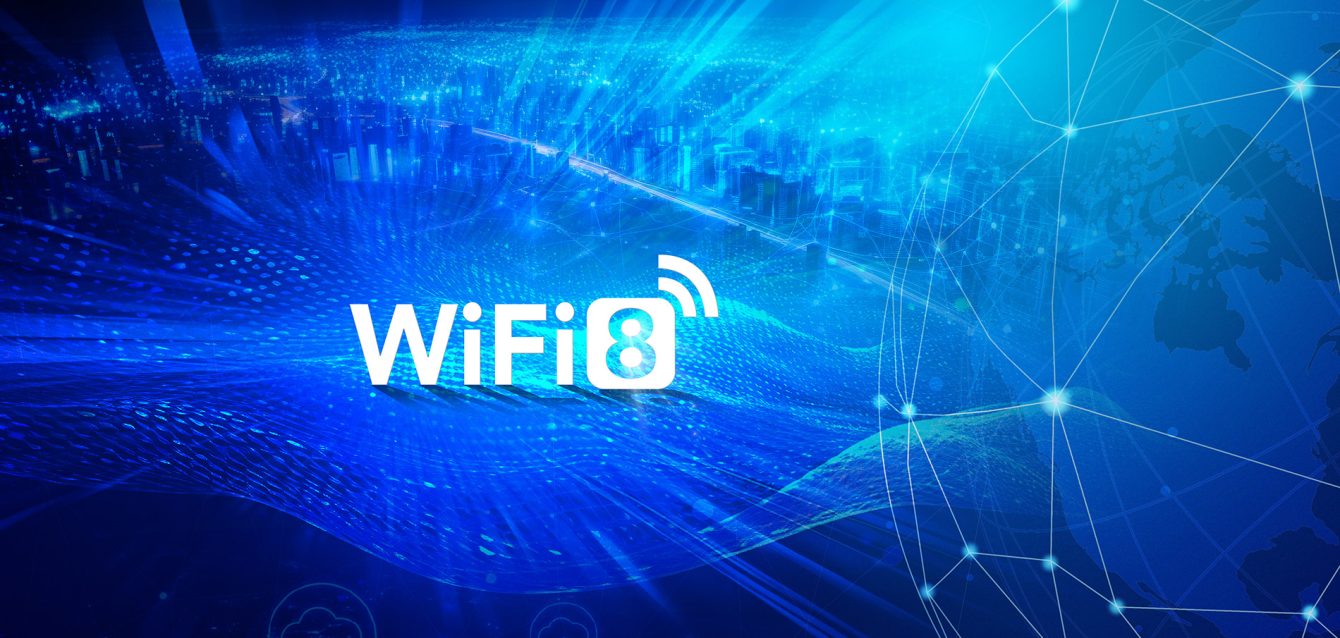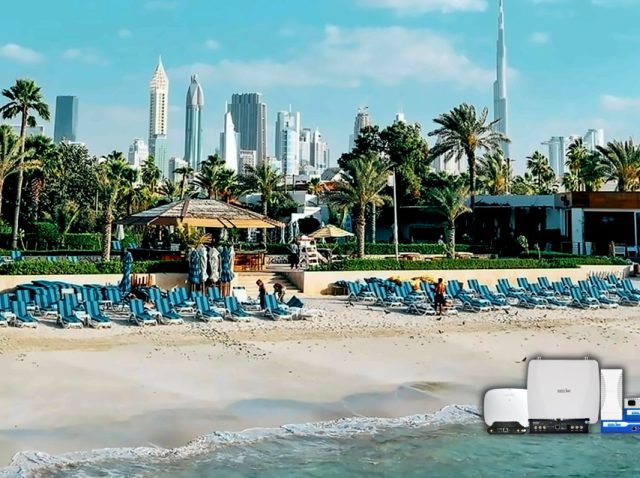Wi-Fi 8: Reliability, Demand, Change, and the Future of Connectivity
As the world becomes increasingly interconnected, the evolution of wireless technology continues to accelerate, with Wi-Fi standards playing a pivotal role in shaping how we communicate, work, and entertain ourselves. The latest iteration, Wi-Fi 7, certified by the Wi-Fi Alliance in January 2024, has already begun to transform connectivity with its multi-gigabit speeds and enhanced reliability. Yet, the horizon reveals an even more ambitious step forward: Wi-Fi 8, tentatively designated as IEEE 802.11bn or Ultra High Reliability (UHR). Expected to take shape by 2028, Wi-Fi 8 promises to redefine wireless networking by prioritizing reliability and efficiency over mere speed increases. This 2000-word article delves into the properties of Wi-Fi 8, explores the necessity driving its development, examines the changes it will introduce, and identifies the key adopters who will shape its future. While the establishment narrative touts Wi-Fi 8 as the next leap in connectivity, a critical examination reveals both its potential and the challenges that may temper its widespread adoption.
Properties of Wi-Fi 8: A Focus on Reliability and Efficiency
Wi-Fi 8, still in the pre-specification phase under the IEEE 802.11 Working Group, is poised to build on the foundation laid by Wi-Fi 7 while shifting the focus from maximizing theoretical throughput to enhancing real-world performance. Unlike previous generations that chased higher data rates—Wi-Fi 7 achieving a theoretical maximum of 23 Gbps—Wi-Fi 8 is expected to maintain similar peak speeds but prioritize ultra-high reliability (UHR) and deterministic connectivity. This shift acknowledges that the practical limitations of high-speed wireless, such as interference and device density, often prevent users from realizing advertised speeds.
One of the standout properties of Wi-Fi 8 is its emphasis on Multi-Access Point Coordination (MAPC). This feature builds on Wi-Fi 7’s Multi-Link Operation (MLO) by enabling multiple access points (APs) to collaborate, reducing interference and optimizing spectrum usage. MAPC allows APs to share transmission schedules and channel information, ensuring efficient communication in dense environments like stadiums or enterprise offices. Early tests, such as those conducted by MediaTek, suggest throughput improvements of 20% to 50% in mesh networks, a critical advancement for public spaces.
Another key property is Coordinated Beamforming (Co-BF), an evolution of beamforming technology. Co-BF directs signals precisely toward intended devices while minimizing interference with others, enhancing reliability in crowded settings. This could boost throughput by up to 50% in optimal conditions, according to industry reports. Dynamic Sub-Channel Operation (DSO) further enhances efficiency by dynamically assigning bandwidth based on device capabilities, potentially increasing throughput by 80% for advanced devices. This adaptability is vital in environments with varying device loads.
Wi-Fi 8 also introduces improved Modulation Coding Schemes (MCS) with finer gradations, allowing smoother transitions in connection quality as devices move through different coverage areas. This could improve transmission rates by 5% to 30%, addressing the common issue of dropped connections. Additionally, Distributed Resource Units (dRU) targets low-power indoor (LPI) devices in the 6 GHz band, distributing tones across wider bandwidths to boost uplink power and efficiency, a boon for IoT applications.
A notable inclusion is the potential use of millimeter-wave (mmWave) frequencies (42.5–71 GHz), which could support data rates up to 100 Gbps and enable advanced use cases like augmented reality (AR) and virtual reality (VR). However, mmWave’s line-of-sight requirement poses challenges, as obstructions can disrupt signals, questioning its practicality in diverse settings. Ambient power communication, another experimental feature, aims to harvest energy from motion or environmental sources to power IoT devices, though its real-world viability remains unproven.
Finally, the integration of Artificial Intelligence (AI) and Machine Learning (ML) is expected to optimize connectivity by predicting network conditions and adjusting parameters in real-time. This could mitigate the unpredictability of wireless links, a persistent issue in high-density networks. While these properties signal a transformative shift, the lack of new spectrum allocation beyond the 2.4 GHz, 5 GHz, and 6 GHz bands—unlike the 6 GHz expansion with Wi-Fi 6E—suggests Wi-Fi 8 will rely on smarter usage rather than raw bandwidth increases.

Why Wi-Fi 8 Is Needed: Addressing Modern Connectivity Demands
The need for Wi-Fi 8 arises from the evolving demands of an ultra-connected world, where traditional metrics like throughput are no longer sufficient. The rapid proliferation of the Internet of Things (IoT), with billions of devices requiring stable connectivity, has exposed the limitations of previous standards. Wi-Fi 7, while a leap forward, still struggles with reliability in dense environments and latency-sensitive applications like real-time gaming, telesurgery, and industrial IoT. The establishment narrative often frames new Wi-Fi generations as speed-driven upgrades, but the real challenge lies in ensuring consistent performance amidst growing device density and interference.
Emerging technologies like AR/VR, 8K streaming, and industrial automation demand ultra-low latency and deterministic connectivity—qualities Wi-Fi 7 partially addresses but cannot fully guarantee. For instance, VR experiences can cause motion sickness if latency exceeds 20 milliseconds, a threshold Wi-Fi 7 struggles to maintain in crowded settings. Wi-Fi 8’s focus on UHR aims to bridge this gap by prioritizing effective throughput—the speeds users actually experience—over theoretical maxima. This is crucial as global IoT device numbers are projected to exceed 30 billion by 2030, per industry estimates, straining existing networks.
Moreover, the digital divide highlighted by the International Telecommunication Union (ITU) for 6G systems underscores the need for improved indoor connectivity, a domain where Wi-Fi dominates. Wi-Fi 8’s enhancements could extend reliable access to underserved areas, though this assumes widespread infrastructure upgrades, a costly endeavor. The reliance on service providers to subsidize hardware, as seen with Wi-Fi 7 adoption, may also drive Wi-Fi 8’s necessity, offering consumers affordable access to reliable networks.
Critically, the push for Wi-Fi 8 may reflect industry hype rather than urgent need. Many users still operate on Wi-Fi 5 or 6, with Wi-Fi 6E adoption lagging due to cost and device compatibility. The question arises: Are we creating hardware for innovation’s sake, or do businesses genuinely require these advancements? The answer lies in balancing technological progress with practical adoption, a tension Wi-Fi 8 must navigate.
What Will Change with Wi-Fi 8: A Paradigm Shift in Wireless Networking
Wi-Fi 8 will introduce several transformative changes, shifting the wireless paradigm from speed-centric to reliability-centric. The most significant change is the abandonment of aggressive throughput increases beyond Wi-Fi 7’s 23 Gbps. Instead, the standard will focus on stabilizing connections, a departure from the traditional IEEE 802.11 trajectory. This shift acknowledges that real-world speeds rarely approach theoretical maxima due to interference, distance, and device limitations.
Network Architecture and Management: Wi-Fi 8’s MAPC and Co-BF will revolutionize network coordination. Multiple APs will operate as a cohesive unit, dynamically adjusting to avoid interference and optimize coverage. This could eliminate the soft handoff issues plaguing mesh networks, a common complaint in large warehouses or public venues. DSO’s dynamic bandwidth allocation will further refine this, ensuring high-performance devices receive priority without bottlenecking others.
Latency and Reliability: Enhanced MCS and AI/ML integration will reduce latency and improve predictability, critical for applications like telesurgery or autonomous vehicles. Restricted Target Wake Time (TWT), potentially carried over from Wi-Fi 7 drafts, will allow devices to negotiate transmission slots, minimizing contention and saving power for IoT devices. This could lower latency to single-digit milliseconds in ideal conditions, a leap from Wi-Fi 7’s 15-20 ms average.
Spectrum Utilization: The inclusion of mmWave, despite its line-of-sight constraints, will expand capacity in high-density areas, complementing the 6 GHz band. However, countries like China, which allocate 6 GHz for 5G/6G, may limit mmWave’s global impact, raising questions about standardization. Ambient power communication, if viable, could reduce energy costs, though its scalability remains speculative.
Device and Infrastructure Requirements: Wi-Fi 8 will necessitate new hardware, including advanced antennas for mmWave and fiber-optic backhaul to support its performance. Older buildings with copper wiring may face costly retrofits, potentially delaying adoption. Backward compatibility will ensure Wi-Fi 8 APs support older standards, but maximum benefits will require Wi-Fi 8-enabled devices, a gradual transition similar to Wi-Fi 7.
Environmental and Economic Impact: The shift to reliability may reduce energy waste from retransmissions, aligning with sustainability goals. However, the production of new hardware and infrastructure upgrades could increase electronic waste, a concern the industry must address. Economically, service provider subsidies, as seen with Wi-Fi 7, may drive adoption, but the initial investment could burden smaller enterprises.
Who Will Adopt Wi-Fi 8: Key Players and Market Dynamics
Wi-Fi 8’s adoption will span diverse sectors, driven by specific needs and economic feasibility. The timeline—draft specifications in 2024-2025, early hardware in 2026-2027, and standardization by 2028—suggests a gradual rollout, with widespread deployment post-2029.
Early Adopters:
- Enterprises in Dense Environments: Companies in stadiums, airports, and large offices will adopt Wi-Fi 8 to manage high device densities and ensure reliable connectivity. For example, a 60,000 sq. ft. warehouse with 100 employees averaging 90 Mbps over VPN could see significant reliability gains, justifying early investment.
- Technology Innovators: Automotive and construction firms, quick to embrace new standards, will deploy Wi-Fi 8 for AR/VR training and IoT coordination. Tesla, for instance, could integrate it for real-time vehicle diagnostics.
- Healthcare and Industrial IoT: Hospitals using telesurgery and factories with Industry 4.0 systems will prioritize Wi-Fi 8’s low latency and determinism. The ability to support 8K tele-diagnostics could revolutionize remote care.
Mainstream Adopters:
- Hospitality and Education: Hotels and universities, following three- to six-year upgrade cycles, will adopt Wi-Fi 8 to meet guest and student expectations for seamless streaming and VR learning. Chains like Marriott, already upgrading to Wi-Fi 6, may transition during refreshes.
- Service Providers: Telecoms like Verizon or AT&T will subsidize Wi-Fi 8 routers, driving consumer adoption by leasing units, as seen with Wi-Fi 7. This lowers entry barriers, though it may tie users to long-term contracts.
- Consumer Electronics: Smartphone makers (e.g., Apple, Samsung) and laptop manufacturers (e.g., Dell, Lenovo) will integrate Wi-Fi 8 chips post-2029, following Wi-Fi 7’s current rollout. Early device support will be limited to flagships.
Reluctant Adopters:
- Small Businesses and Legacy Users: Companies using Wi-Fi 4 or 5 for basic IoT may resist due to cost and lack of need. A small retailer with 2.4 GHz devices might see little benefit, sticking to older standards.
- Developing Regions: Countries without full 6 GHz access (e.g., China, UK with partial bands) may lag, constrained by spectrum allocation and infrastructure costs. This could widen the digital divide, challenging the ITU’s connectivity goals.
Critical Perspective: Adoption will hinge on cost-benefit analysis. The establishment narrative suggests universal uptake, but economic disparities and regulatory hurdles may delay progress. Larger organizations with budgets for fiber-optic upgrades will lead, while smaller entities may wait for price drops or second-hand markets. The focus on reliability over speed also risks alienating consumers expecting headline-grabbing gigabit claims, potentially slowing mainstream enthusiasm.
Conclusion: The Future Shaped by Wi-Fi 8
Wi-Fi 8, with its properties of MAPC, Co-BF, DSO, mmWave, and AI/ML integration, marks a paradigm shift toward ultra-high reliability and efficient spectrum use. Its necessity stems from the demands of IoT, AR/VR, and industrial applications, addressing Wi-Fi 7’s limitations in dense and latency-sensitive settings. Changes will redefine network management, latency, and infrastructure, though challenges like mmWave limitations and upgrade costs loom large. Adoption will begin with enterprises, service providers, and tech innovators, expanding to hospitality and consumers, while smaller entities and developing regions may lag.
This evolution reflects a maturing industry, moving beyond speed to stability. Yet, the critical lens reveals potential overreach—will the focus on reliability resonate with users, or will it be overshadowed by economic and regulatory realities? As Wi-Fi 8 takes shape by 2028, its success will depend on balancing innovation with accessibility, ensuring it truly serves the connected world it aims to empower.





